What Is the Best Wood for Furniture? (With Pictures)
-
Pete Ortiz
- Last updated:

Buying furniture can seem straightforward, but if you don’t appreciate the differences between the various wood options, it’s easy to miss out on the best value for your needs. Many manufacturers use different kinds of wood because they are high quality, while others settle on inexpensive, cost-effective varieties. When you know the benefits of various wood species, you can better estimate the performance, longevity, and wear of a furniture piece.
When you understand the different woods in furniture, you can approach your furniture purchase or DIY build with confidence! Here are the top types of wood to look for in your next furniture piece.
The 9 Best Woods for Furniture
1. Walnut
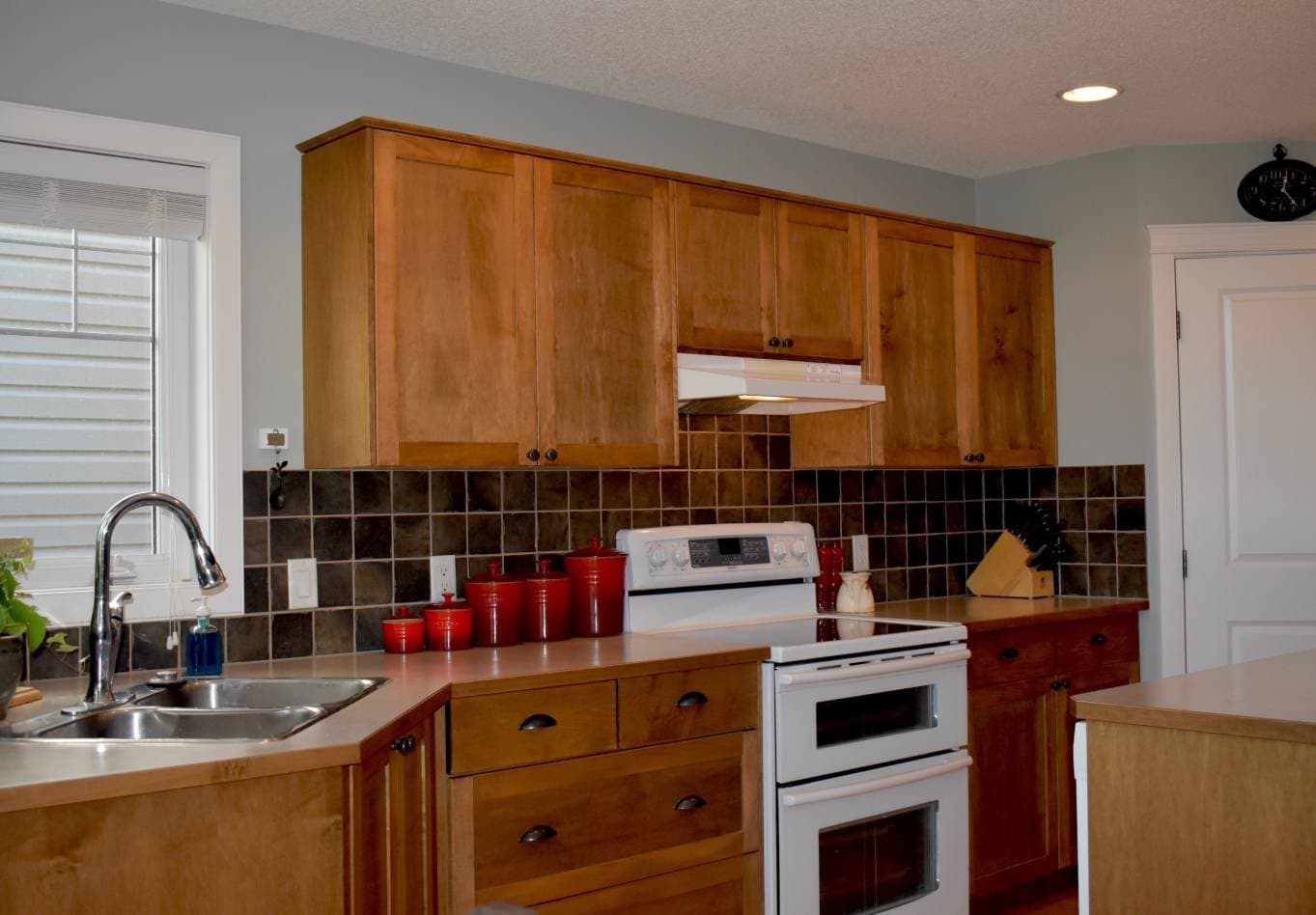
Walnut is fashion and performance all in one—a dense hardwood sporting rich chocolate hues and spectacular, textured grain patterns. Given its hardness, walnut is ideal for furniture that you want to last against time and abuse. Despite its resilience and durability, it’s still easy to work with, making it a favorite for woodworkers making treasured, ornate designs.
Because it can be expensive, walnut is best for elegant heirloom pieces you want to pass down to future generations. It’s hard to purchase in large amounts, so you should ideally stick to decorative accents if you plan to use walnut.
- Wide variety of available shades from cream to dark brown
- Durable against wear, mold, and decay
- Long-lasting
- Attractive grain character
- Heavy and difficult to maneuver in large pieces
- Expensive
2. Maple

Available in hard and soft varieties, maple works in a diverse array of settings. Hard maple is much harder than walnut, so much so that although it is extremely durable, it’s also challenging to cut and shape.
By contrast, soft maple is slightly softer than walnut, making it practical for woodworking and durable enough for most types of furniture. As a much more affordable option than walnut, maple is ideal for families trying to get exceptional value out of their pieces.
There are many maple varieties, but you will seldom find dark colors. Most range from white to light reddish-brown colors, though the heartwood can get darker. The grain pattern tends to be straight and thin, making it resistant to splitting.
- Durable, wear-resistant
- Attractive light wood color
- Resists splitting and decay
- Less expensive than similar hardwoods
- Takes stain well, easy to darken
- Low maintenance
- Light wood makes blemishes more visible
- Straight, subtle grain pattern may be considered dull
3. Mahogany
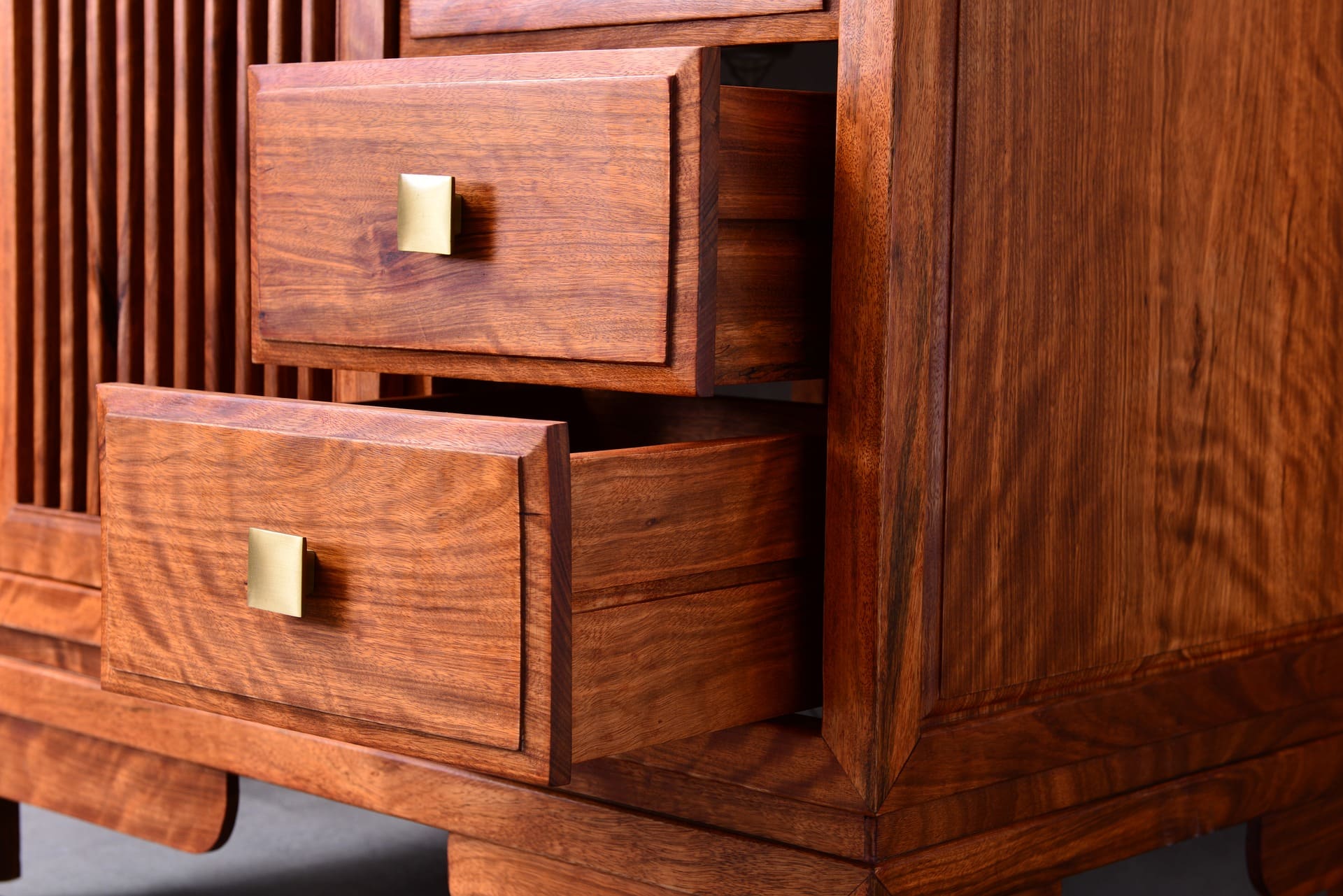
Like walnut, mahogany is one of the most desirable hardwoods for furniture, prized for its beautiful color and grain pattern. The grain has a straight, neat character, but you can find some varieties with wavy or irregular shapes. It has a warm, reddish-brown hue that gets darker and richer as it ages, adding to its appeal.
A slightly softer wood than soft maple, mahogany is easy to work with and perfect for more detailed pieces. It’s a sturdy option if you want an ornate, long-lasting piece of furniture, but it also comes at a higher price than many other hardwoods.
- Beautiful, uniform coloration
- Resists moisture, decay, and insects
- Durable and long-lasting
- Takes polishes and oils well
- Easy to carve and form
- Limited production and higher cost than other hardwoods
4. Birch
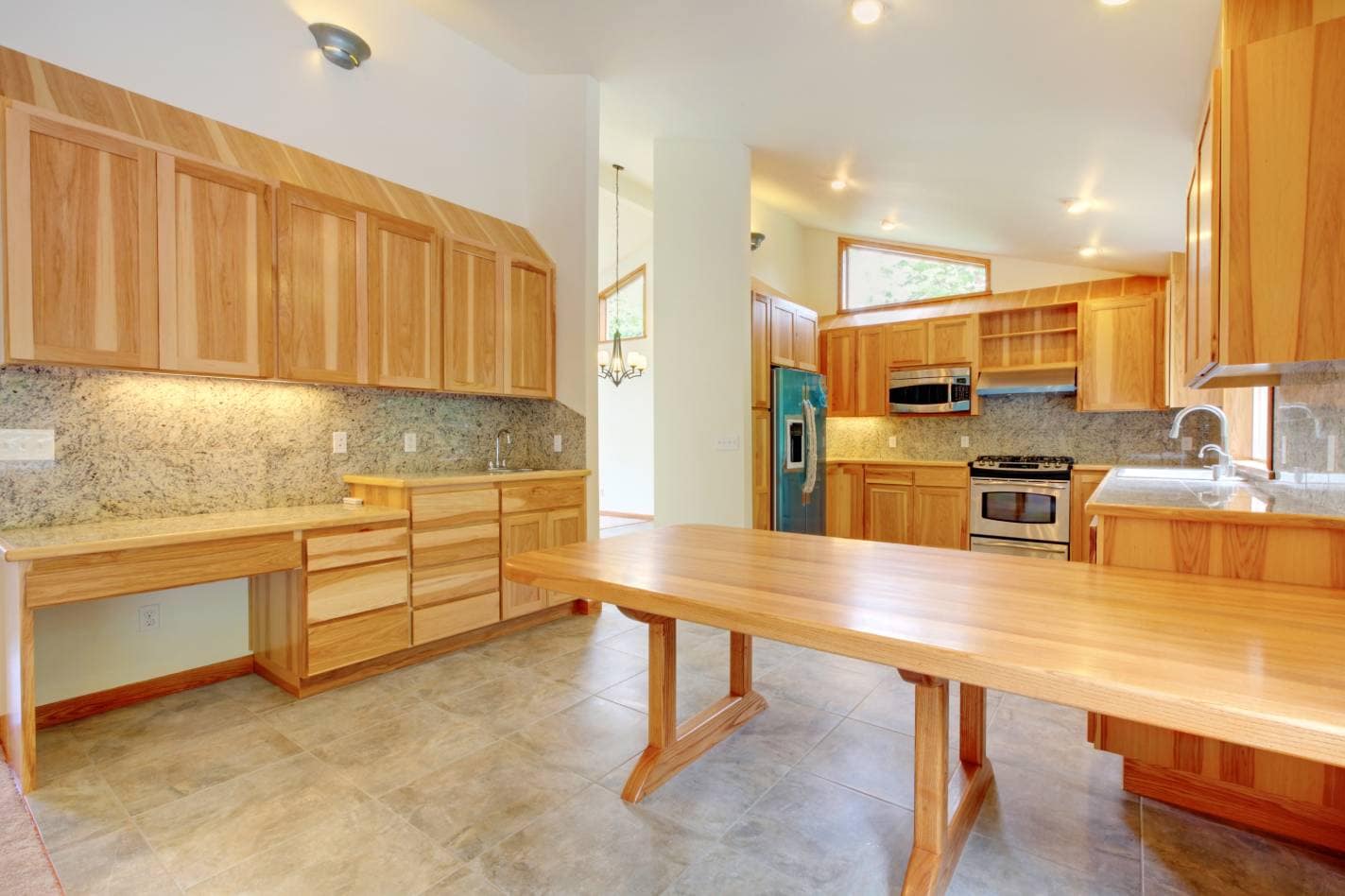
Birch is grown throughout North America, and it has become a popular hardwood for furniture thanks to its incredible strength and wear-resistance. You can also find it in cabinetry and plywood, with the yellow and sweet birch varieties being the most common. The wood pattern is attractive, with a pale color ranging from white to blond and a faint, clean-lined grain creating a bright look aligning with minimalist interiors.
Its hardness, low cost, and workability make birch suitable for indoor furniture. The light color is difficult to stain evenly, but the grain takes well to glues and fasteners. Its durability and strength nearly match maple, and it’s a more affordable alternative.
- Attractive golden color when unstained
- Unlikely to splinter
- Durable and hard yet easy to work with
- Less expensive than similar hardwoods
- Subtle grain pattern could be considered dull
- Staining can be uneven and blotchy
- Susceptible to decay, not ideal for outdoor uses
5. Cherry
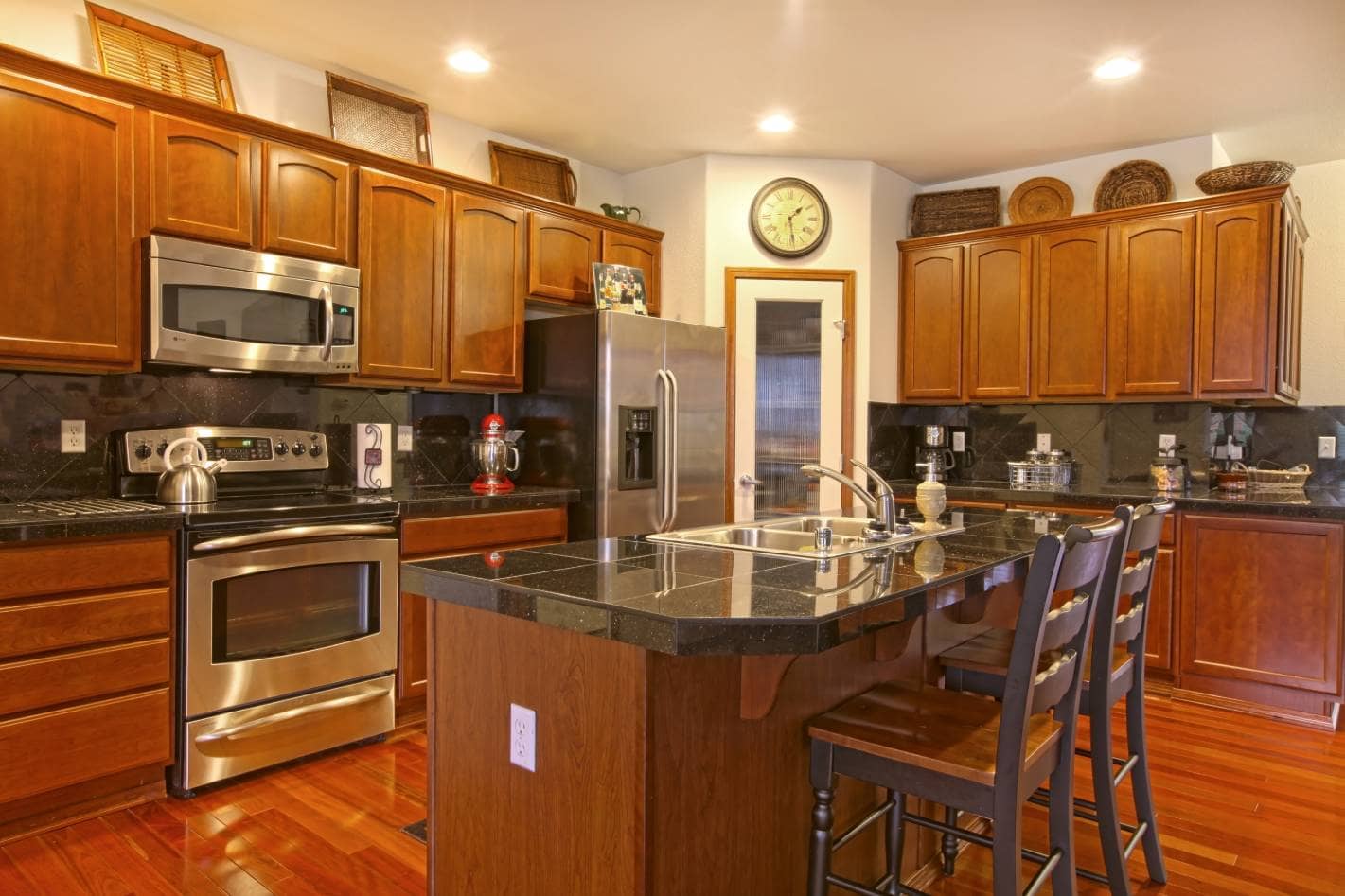
Cherry is a popular wood in furniture-making, as it provides one of the finest finished appearances available. Cherry heartwood has a rich reddish-brown hue, while the sapwood is closer to white, giving you distinct, gorgeous color variations.
The tight, straight grain of cherry wood makes it easy to maneuver and machine. It’s also flexible and suitable for steaming, convenient qualities when curving and shaping the wood.
It’s a stout wood, able to last several decades when well-maintained. As it ages, the dazzling red hues turn even deeper. Strong, timeless, and refined, cherry is a classic choice for high-quality furniture, whether you’re using solid pieces or veneers.
- Strong and long-lasting
- Beautiful, bold coloration
- Color darkens under light for an aged look
- Resists decay
- Excellent workability, easy to shape
- More expensive than many other hardwoods
- Staining can be difficult
6. Oak
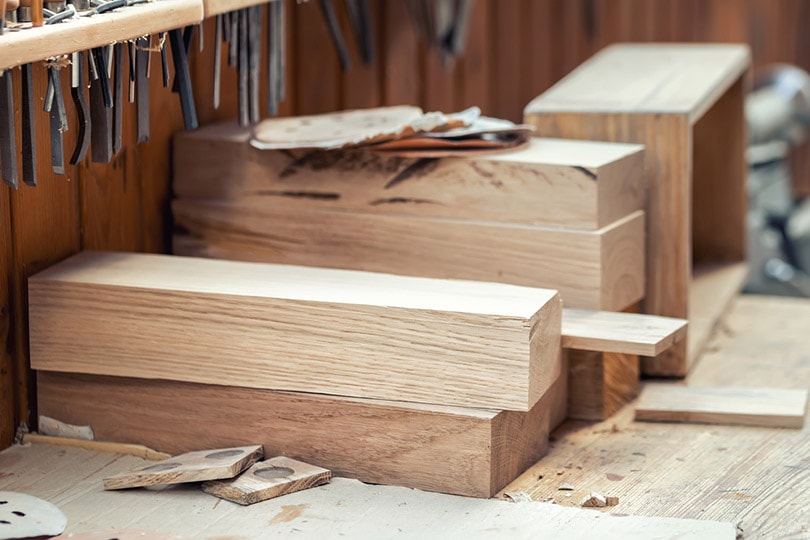
Available in red and white varieties, oak is one of the most widely used woods in furniture-making. Like many other kinds of wood on this list, oak is durable and long-lasting. It’s a dense wood as well, with a hardness close to that of hard maple, yet it’s surprisingly easy to work with, which is why it’s a favorite for woodworkers trying to build sturdy furniture.
White oak is generally preferred over red oak due to its superior rot and weather resistance and more attractive look. Add in its exceptional workability, suitability for staining and finishing, and relatively low cost, and you get one of the most practical options for quality furniture out there.
- Moderately priced option, excellent value for quality
- Distinct, attractive grain
- Extremely dense and hard
- Holds stain and glue well
- Easy to shape
- Scratch and wear-resistant
- Unlikely to decay or warp
- Red oak is prone to rot and insect damage
- Staining can discolor sections, making the coloration look uneven
7. Mango
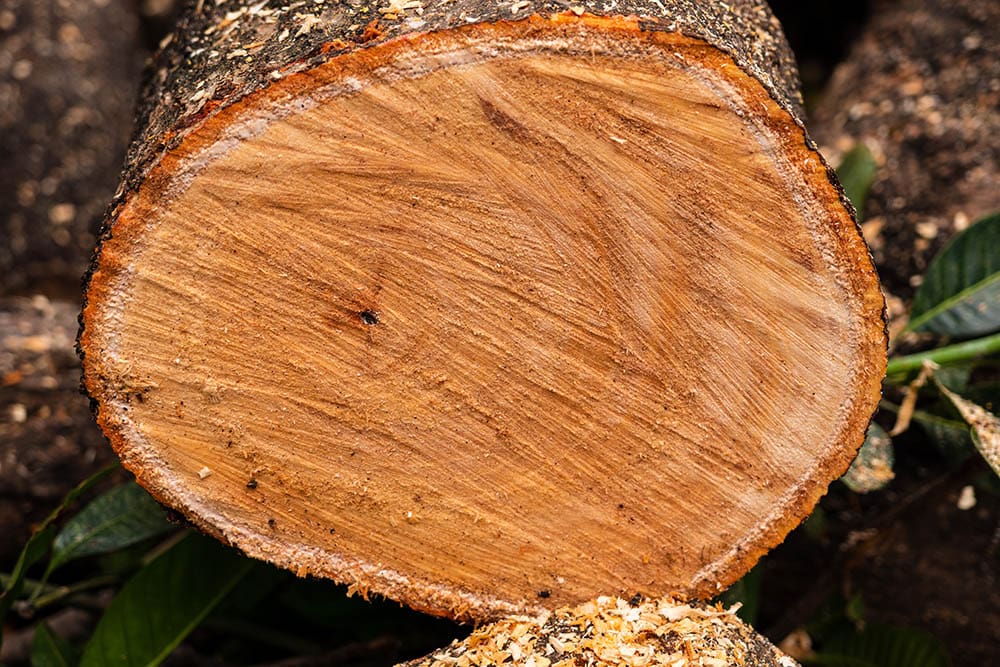
Few people think of mango wood for furniture making, but this exotic variety is practical due to its sustainability and typical hardwood characteristics. Mango wood is an eco-friendly choice because it’s commonly turned into lumber after being harvested for its fruit. Its wide availability makes it much more affordable than comparably sturdy wood options.
Mango wood is hard and heavy, resistant to damage, and easy to maintain. The wood is easy to work on and able to take glue and fasteners without the risk of splitting. It also sports one of the more unique grain patterns, with irregular lines and spalting creating various colors ranging from dark gray to iridescent gold.
- Durable and dense
- Unique, shimmery grain pattern and spalting
- Sustainably sourced
- Inexpensive compared to similar exotic hardwoods
- Takes glue, fasteners, and stain well
- Moisture-resistant
- Susceptible to insects and fungus
- Prone to warping under stress
8. Cedar
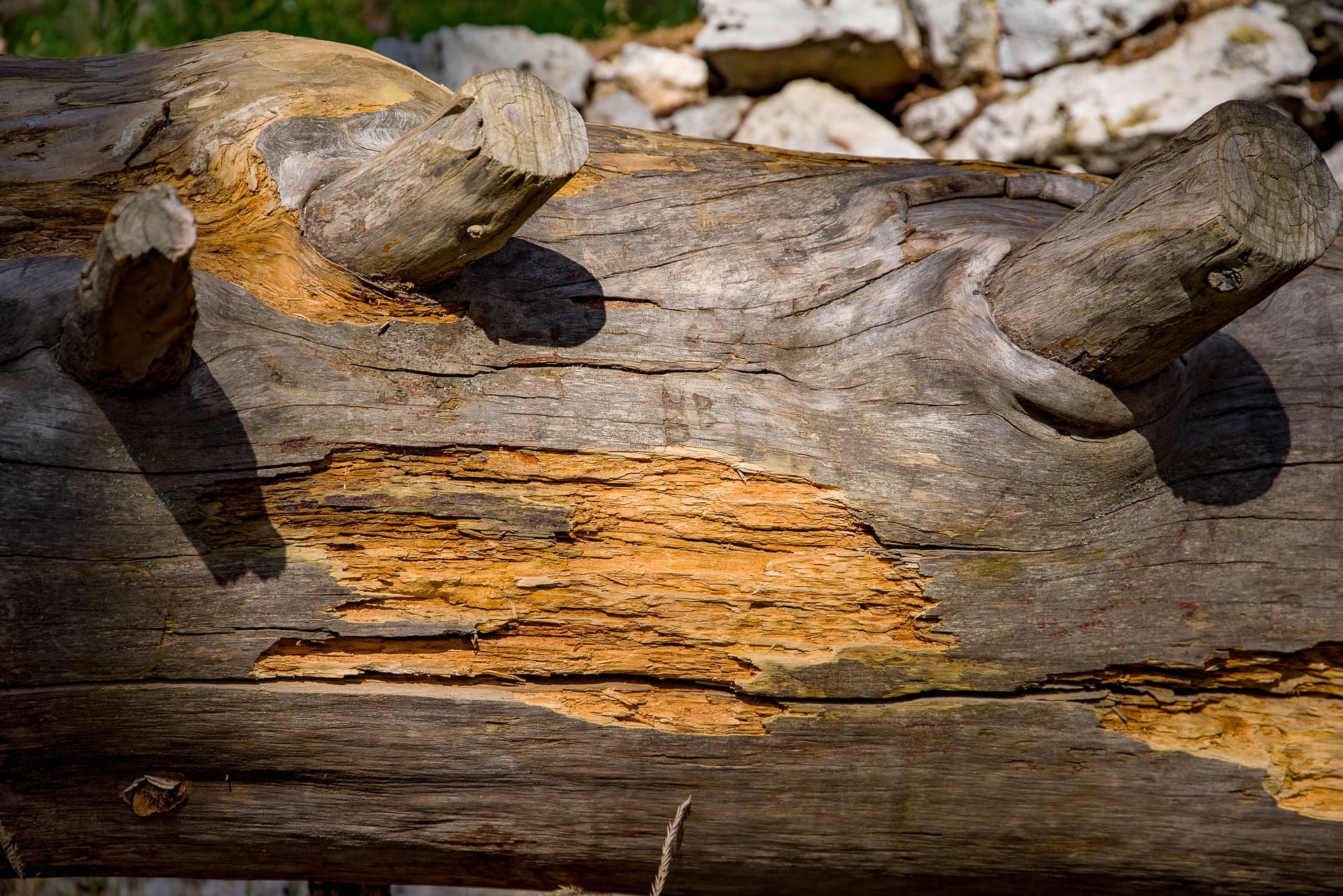
Hardwoods dominate in most furniture designs, but cedar is one softwood that is uniquely beneficial in case goods. Red cedar is known for its pleasant aroma, a functional feature for dresser drawers and closets to freshen clothes and keep insects away.
Cedar is a softwood, but it’s strong enough for outdoor applications. It’s a premium material for siding and fencing because of its resistance to rot and insects. Those same qualities make it great for indoor and outdoor furniture as well.
- Brilliant purplish-red coloration
- Durable, resistant to decay and insect attacks
- Excellent workability
- Finishes and stains well
- Wide availability
- Weak under heavy weight
- Prone to fading
- Does not hold nails or other fasteners well
- Damages easily
9. Pine
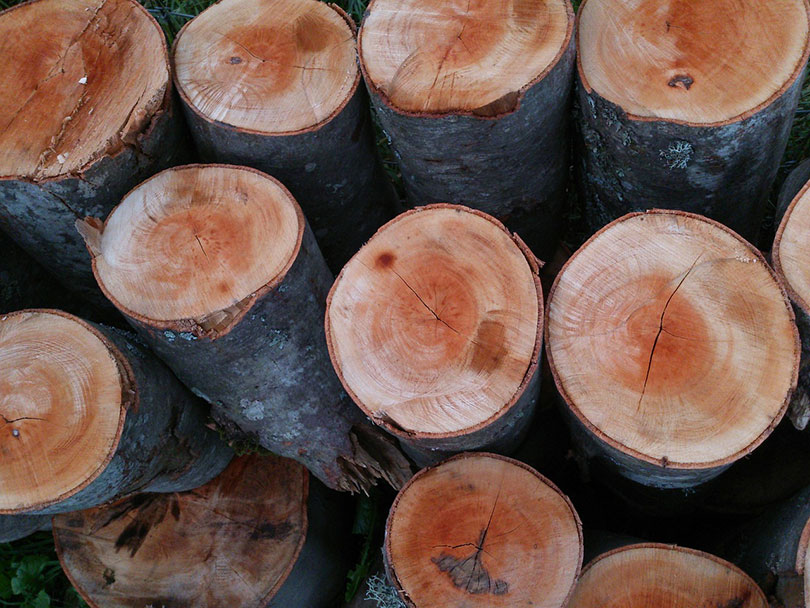
Pine is a cost-effective softwood that exudes a genuine rustic appeal in its distinct pattern and color. Although it’s easily scratched and dented, the forgiving softness of pine also makes it perfect for carving and shaping into various furniture pieces. It’s also lightweight and holds paint and stains well, making it an all-around easy-to-use material for woodworkers of all skill levels.
Pine is usually light-colored, with hues running from white to light red. The tell-tale feature of pine is the grain, boasting unique knots and patterns that add rural charm to any home.
- Easy to carve and shape
- Gorgeous knotting and grain character
- Holds paint and stain well
- Inexpensive and widely available
- Maintains form against temperature changes
- Prone to dents and scratching
What Is the Cheapest Wood for Furniture?
Pine is generally one of the least expensive woods for furniture due to its high availability. Different varieties of pine used in woodworking are grown across the globe, and most grow fast, keeping stock ample at all times. Because of its relative softness and susceptibility to damage, most manufacturers keep pine prices low. If you’re looking for quality furniture for a kid’s room without breaking the bank, pine is an excellent place to start.
For an inexpensive hardwood, you can choose poplar. Poplar is sturdy and resilient but easy to work into several different types of furniture. The main downside is that it’s not the most attractive wood, so it’s best if you plan to coat it or use it as a structural component that remains hidden.
Final Thoughts
Real wood is superior to engineered and faux wood alternatives for several reasons. Whether it’s solid or veneer, genuine wood will give you unmatched durability and beauty, making it a wise investment for any room of the house.
Knowing the different qualities of woods used in furniture will be a tremendous help during your next purchase. By understanding the benefits of different hardwoods and softwoods, you can make the best decision for your specific situation and get the lasting quality you expect.
Featured Image Credit: Houseoffanusta, Pixabay
Contents



